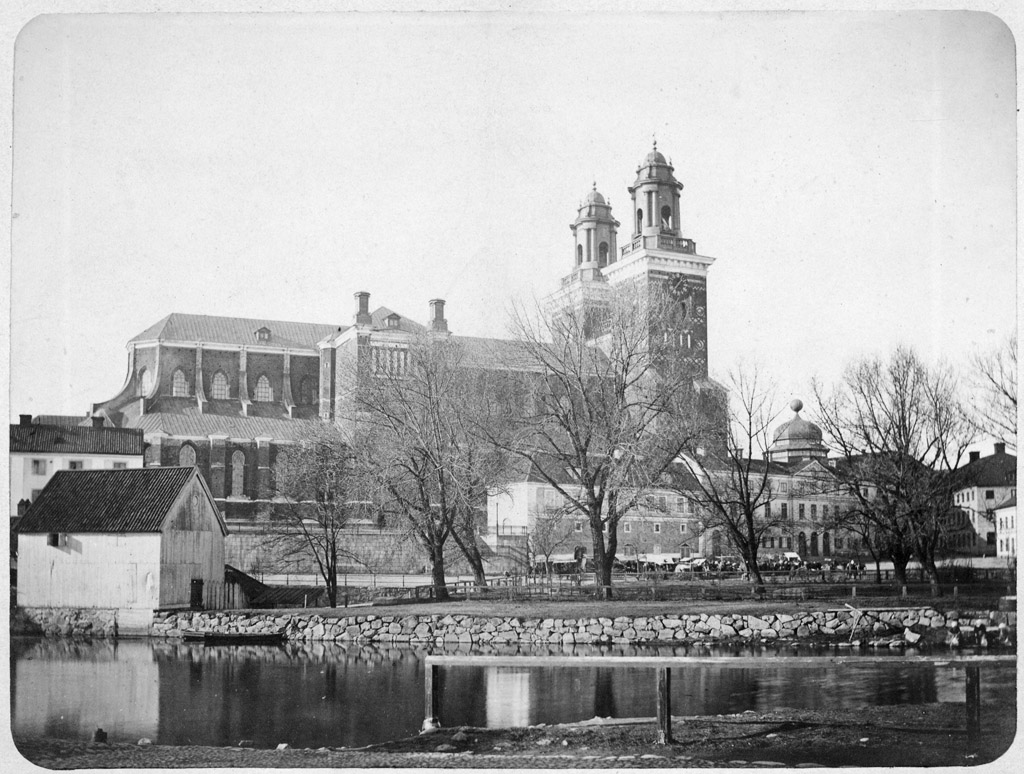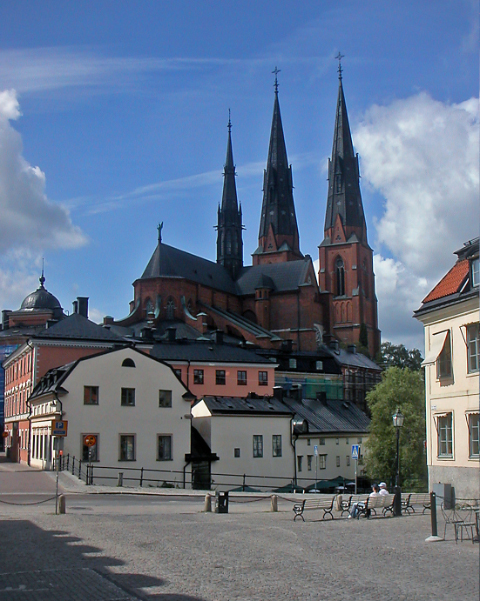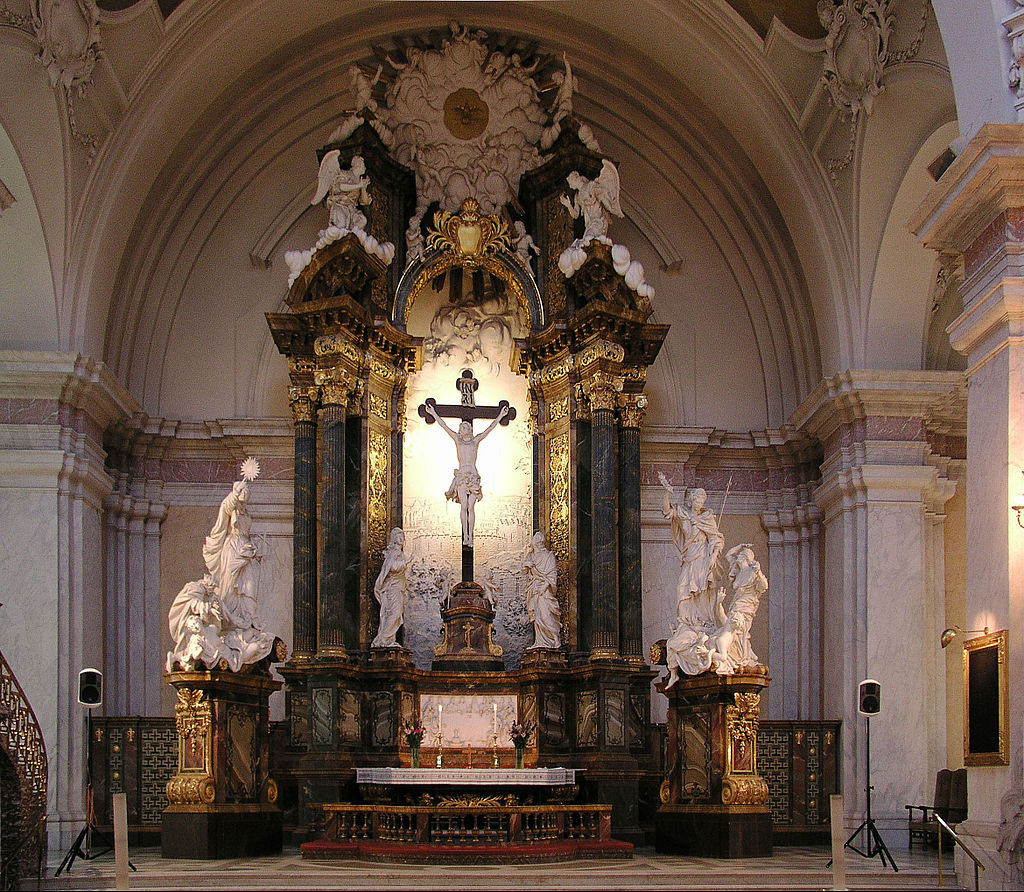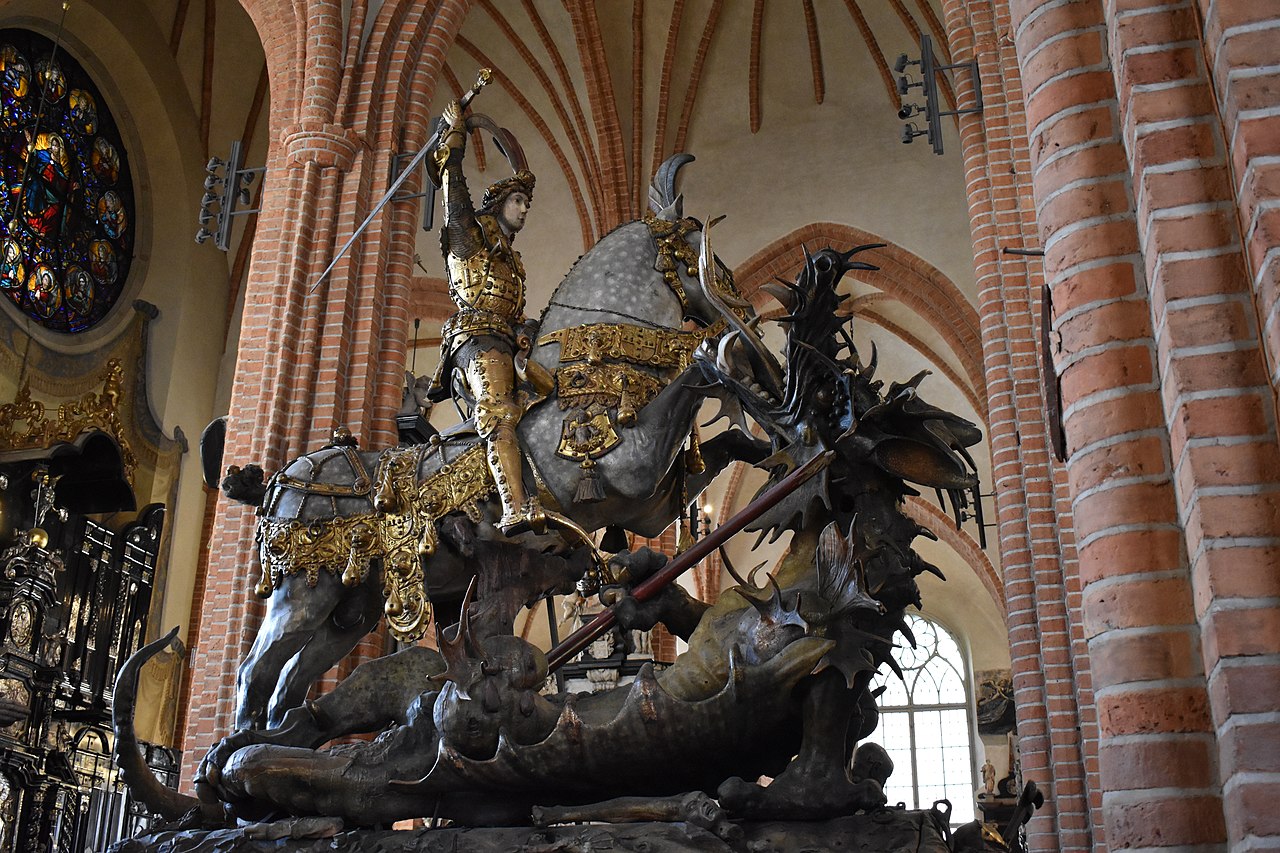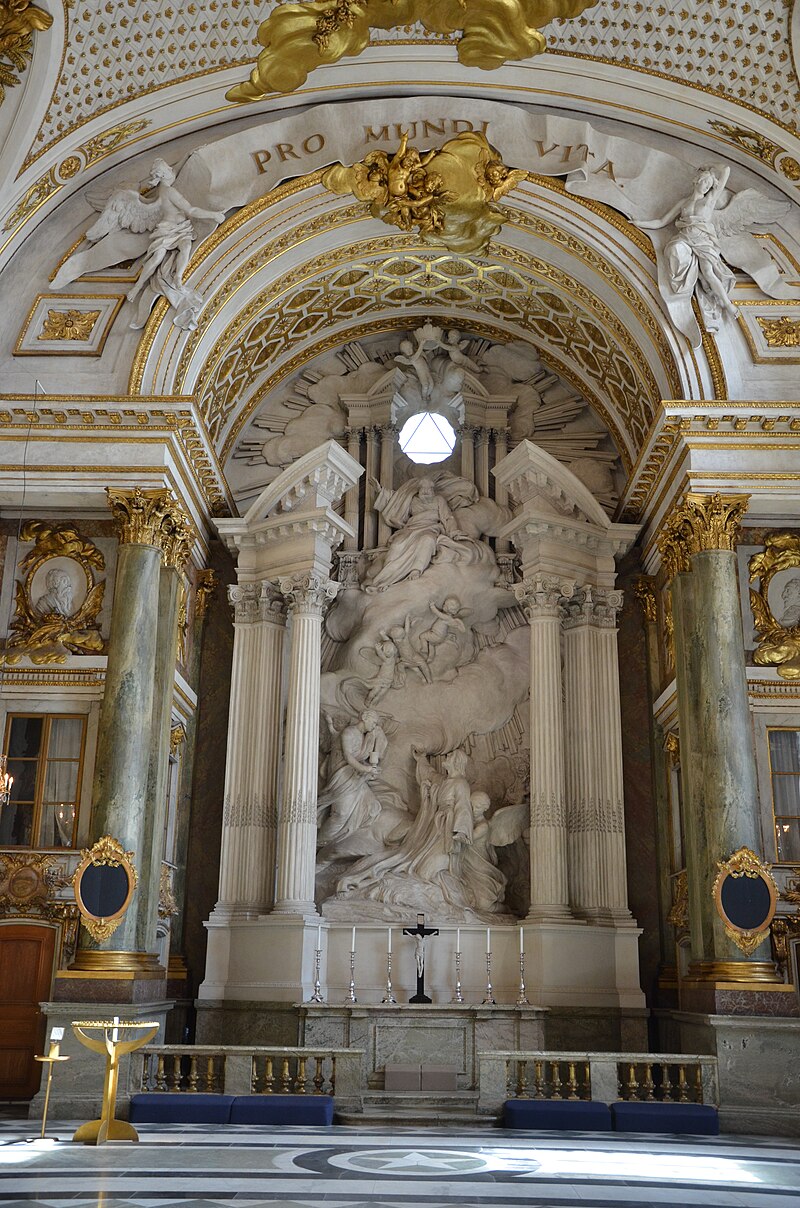by Susan Flantzer
© Unofficial Royalty 2022

Johann I Josef, Prince of Liechtenstein; Credit – Wikipedia
Johann I Josef, reigned as Prince of Liechtenstein from 1805 – 1836. Born in Vienna, Austria on June 26, 1760, Johann Baptist Josef Adam Johann Nepomuk Aloys Franz de Paula was the sixth of the eight children and the fourth but the second surviving son of Franz Josef I, Prince of Liechtenstein and Countess Marie Leopoldine von Sternberg. Since the Principality of Liechtenstein was a constituent member of the Holy Roman Empire headed by the Habsburgs and Alois’ father had several government positions, the family spent much time in Vienna, Austria.
Johann Josef had seven siblings:
- Prince Josef Franz of Liechtenstein (1752 – 1754), died in childhood
- Princess Leopoldina of Liechtenstein (1754 – 1823), married Karl Emanuel, Landgrave of Hesse-Rheinfels-Rotenburg, had one son
- Princess Maria Antonia of Liechtenstein (1756 – 1821), became a nun
- Prince Franz de Paula Josefof Liechtenstein (1758 – 1760), died in childhood
- Alois I, Prince of Liechtenstein (1759 – 1805), married Countess Karoline von Manderscheid-Blankenheim, no children
- Prince Philipp Josef of Liechtenstein (1762 – 1802), unmarried
- Princess Maria Josefa of Liechtenstein (1768 – 1845), married Nikolaus, 7th Prince Esterházy von Galántha, had two children

Johann Josef as a teenager, 1776; Credit – Wikipedia
Because he had an elder brother and was not expected to succeed to the throne of Liechtenstein, Johann Josef chose a military career in the Imperial Army of the Holy Roman Empire, of which Liechtenstein was a constituent state. At the age of 22, he joined the army with the rank of lieutenant. He participated in the Austro-Turkish War (1788 – 1791) and was promoted to the rank of colonel. Johann Josef gained prominence during the Napoleonic Wars. During the Napoleonic Wars of the early 19th-century, Holy Roman Emperor Franz II feared that Napoleon could take over his personal, hereditary Habsburg lands within the Holy Roman Empire, so in 1804 he proclaimed himself Emperor Franz I of Austria. As it turned out, Franz’s move was a wise one because the Holy Roman Empire was dissolved in 1806.

Holy Roman Emperor Franz I (on the left) meeting Napoleon I, Emperor of the French (on the right) after the Battle of Austerlitz. Johann Joseph is standing in between the two emperors. Credit – Wikipedia
Upon the death of his childless brother Alois I, Prince of Liechtenstein on March 24, 1805, Johan Josef became the reigning Prince of Liechtenstein. However, he continued his military career. Johann Josef was promoted to the rank of field marshal, became commander in chief of the army of the Austrian Empire, and led the Austrian army, the losing side, in the 1805 Battle of Austerlitz. He was later accused of making two unfavorable peace treaties with Napoleon. Both of these agreements were very favorable to Napoleon and unfavorable for Austria, and Johann Josef was accused of having little diplomatic ability. To avoid criticism, Johann Josef left the army in 1810 and shifted his activities to the administration and management of the estates.
In 1806, Napoleon accepted the Principality of Liechtenstein into the Confederation of the Rhine that gave Liechtenstein more sovereignty than it ever had. At the Congress of Vienna (1814 – 1815), which decided the political reorganization of Europe after the Napoleonic Wars and the defeat of Napoleon, the Principality of Liechtenstein was admitted as a sovereign member of the German Confederation, a political union of all German states.
As Prince of Liechtenstein, Johann Josef carried out progressive reforms, and in 1818, however, he approved a new constitution that limited the monarch’s power. He established modern practices in agriculture and forestry and reorganized the government administration to meet modern needs.
Johann Josef arranged for the extensive private art collection of the Princely House of Liechtenstein, started by Karl Eusebius, Prince of Liechtenstein (reigned 1627 – 1684), to be transferred to the Liechtenstein Garden Palace in Vienna, Austria. From 1810, the art galleries at the Liechtenstein Garden Palace, eventually called the Liechtenstein Museum, were open to the public for a fee. It has not been run as a museum since 2012 and is now called Palais Liechtenstein. The Palais Liechtenstein remains home to part of the private art collection of the Princely House of Liechtenstein, one of the largest private collections in the world, and is available for visit by booked guided tours.

Josepha of Fürstenberg-Weitra, Johann Josef’s wife; Credit – Wikipedia
On April 12, 1792, in Vienna, Austria, Johann Josef married Landgravine Josefa of Fürstenberg-Weitra, daughter of Joachim Egon, Landgrave of Fürstenberg-Weitra and Countess Sophia Maria of Oettingen-Wallerstein. Johann Josef and Josefa had fourteen children who were all born in Vienna, Austria including Alois II, Prince of Liechtenstein who succeeded his father:
- Princess Maria Leopoldine of Liechtenstein (1793 – 1808), died in her teens
- Princess Karoline of Liechtenstein (born and died 1795), died in infancy
- Alois II, Prince of Liechtenstein (1796 – 1858), married Countess Franziska Kinsky of Wchinitz and Tettau, had eleven children
- Princess Sophie of Liechtenstein (1798 – 1869), married Count Vincenz Esterházy von Galántha, no children
- Princess Maria Josepha of Liechtenstein (1800 – 1884), unmarried
- Prince Franz de Paula of Liechtenstein (1802 – 1887), married Countess Julia Potocka, had four children. Their great-grandson was Franz Joseph II, Prince of Liechtenstein
- Prince Karl Johann of Liechtenstein (1803 – 1871), married Countess Rosalie d’Hemricourt von Grünne, had three children
- Princess Klothilda of Liechtenstein (1804 – 1807), died in childhood
- Princess Henriette of Liechtenstein (1806 – 1886), married Count Joseph Hunyady von Kethély (link in German), had six children
- Prince Friedrich of Liechtenstein (link in German) (1807 – 1885), married famous German opera singer Sophie Löwe who left the opera to marry Friedrich, no children
- Prince Eduard Franz of Liechtenstein (1809 – 1864), married Countess Honoria Choloniowa-Choloniewska, had two children
- Prince Ludwig of Liechtenstein (1810 – 1824), died in his teens
- Princess Ida Leopoldine of Liechtenstein (1811 – 1884), married Karl 4th Fürst Paar, Baron auf Hartberg und Krottenstein, had seven children
- Prince Rudolf of Liechtenstein (1816 – 1848), unmarried
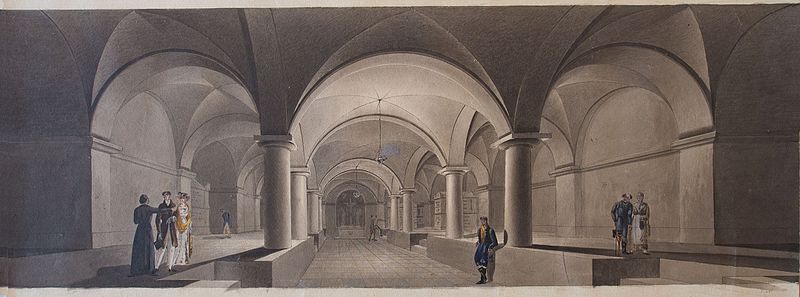
The New Crypt, which Johann Josef had built, at Chuch of the Nativity of the Virgin Mary in Vranov, Moravia, now in the Czech Republic; Credit – Wikipedia
On April 20, 1836, Johann I Josef, Prince of Liechtenstein, aged 75, died at Liechtenstein Palace in Vienna, Austria. His remains were transferred with military honors from the Liechtenstein Palace to the Church of St. Michael the Archangel near the Hofburg Palace in Vienna where a funeral service was held. Johann Josef was buried in the New Crypt, which he had built, at Chuch of the Nativity of the Virgin Mary in Vranov, Moravia, now in the Czech Republic. His wife Josefa survived him by twelve years dying at the age of 72 on February 23, 1848, and was buried with her husband.
This article is the intellectual property of Unofficial Royalty and is NOT TO BE COPIED, EDITED, OR POSTED IN ANY FORM ON ANOTHER WEBSITE under any circumstances. It is permissible to use a link that directs to Unofficial Royalty.
Works Cited
- Cs.wikipedia.org. 2021. Jan I. z Lichtenštejna – Wikipedie. [online] Available at: <https://cs.wikipedia.org/wiki/Jan_I._z_Lichten%C5%A1tejna> [Accessed 13 December 2021].
- De.wikipedia.org. 2021. Johann I. Josef (Liechtenstein) – Wikipedia. [online] Available at: <https://de.wikipedia.org/wiki/Johann_I._Josef_(Liechtenstein)> [Accessed 13 December 2021].
- En.wikipedia.org. 2021. Johann I Joseph, Prince of Liechtenstein – Wikipedia. [online] Available at: <https://en.wikipedia.org/wiki/Johann_I_Joseph,_Prince_of_Liechtenstein> [Accessed 13 December 2021].
- Fuerstenhaus.li. 2021. Century: 19th century. [online] Available at: <https://fuerstenhaus.li/en/die-biographien-aller-fuersten/19-century/> [Accessed 13 December 2021].





